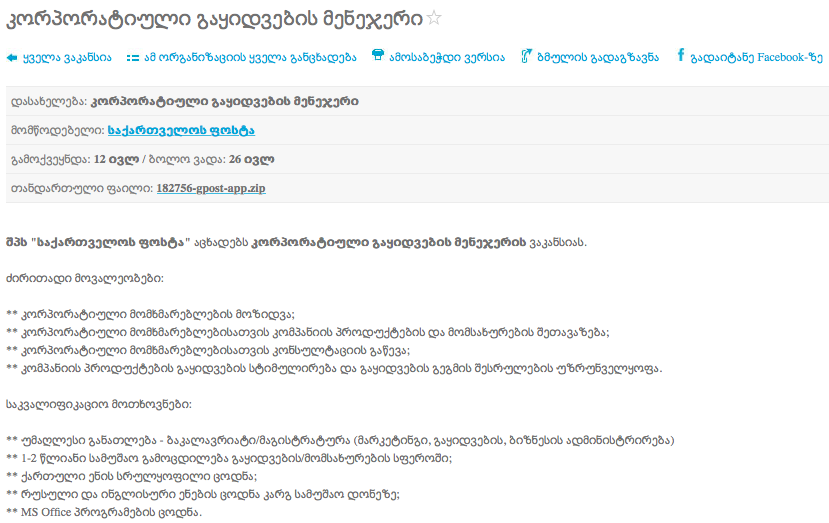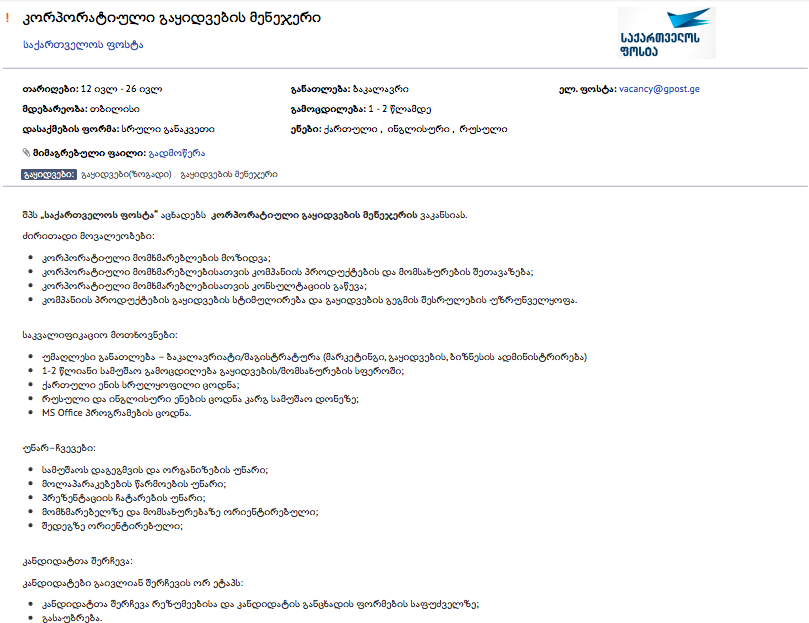Our study is based on the three major job-search websites for the Georgian labour market — jobs.ge, hr.ge, hr.gov.ge. Since February 2018 we regularly check these sources and gather data to add to our database. The code for retrieving data from these websites is available on our GitHub page.
It is worth noting that these websites use different structures for advertising job openings (even the same ones), as these differences determine how we approach data gathering and consolidation. For instance, a typical job posting on jobs.ge appears as follows:

while the same job opening is published on hr.ge as follows:

Even though we were not able to provide English examples, it is still visible from the posting structures that hr.ge makes more information readily available or easily accessible. For example, such essential details as remuneration, education and experience requirements are specified in separate fields in the hr.ge posting, while the same information would need to be extracted from the text of a posting in case of jobs.ge.
Unsurprisingly, it is quite common to have the same job opening advertised on multiple websites. Therefore we have dedicated our first post on methodology to filtering out such repetitions while merging the data.
As hr.gov.ge only publishes job openings from the public sector there is hardly any, although still some, overlap between hr.gov.ge and the other two sources. Regardless, notably different structure of hr.gov.ge postings is significant from the analysis point of view. A typical job posted on hr.gov.ge appears as follows (again, the posting is in Georgian but structural differences are visible):

The structural differences, among other issues, present multiple challenges. We will discuss these challenges in detail in our posts on methodology. Together these three sources represent substantial portion, yet not all, of the Georgian labour market. In the future, we hope to be able to integrate new sources in our database as well as in our analyses.